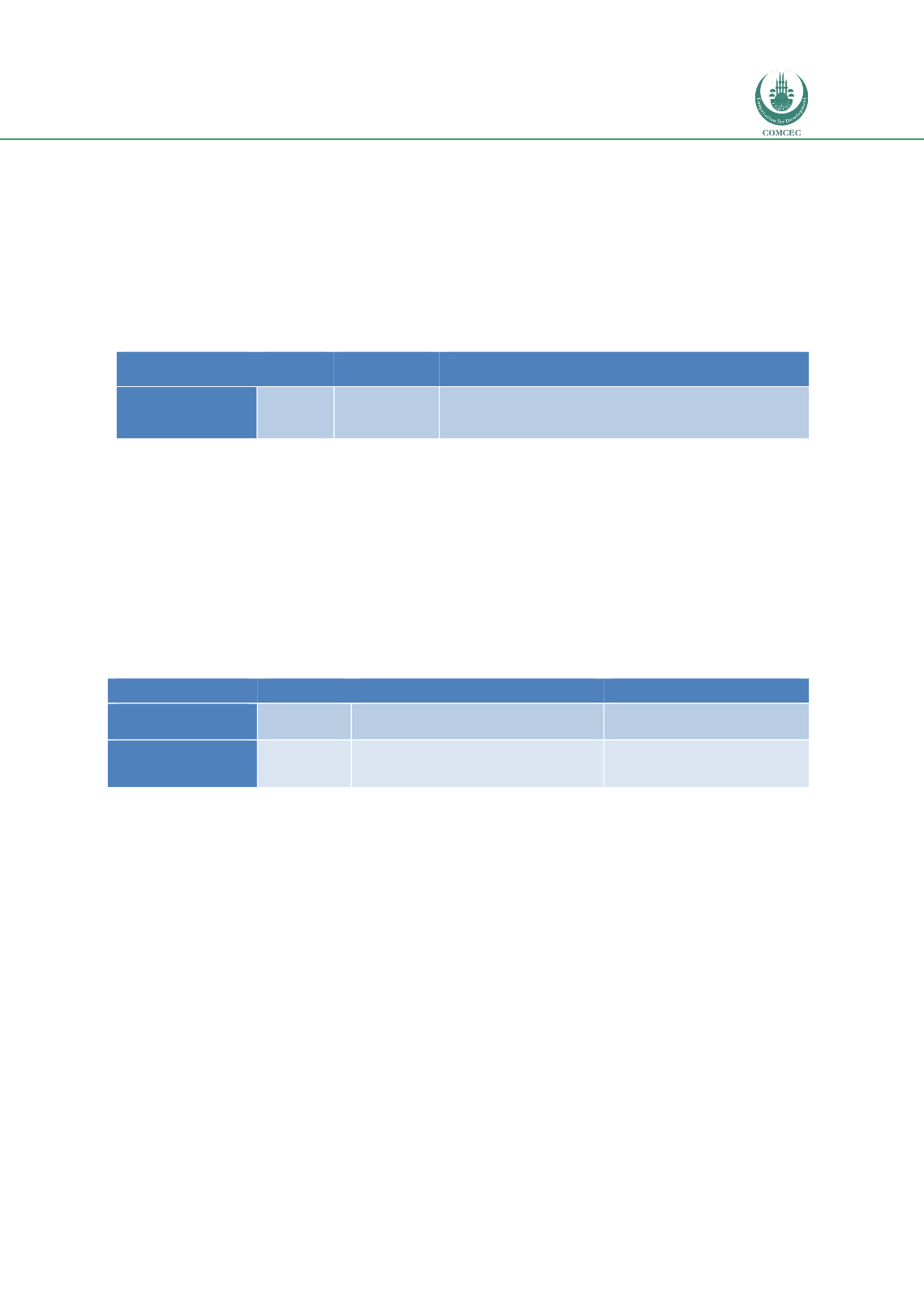

Reducing Postharvest Losses
In the OIC Member Countries
139
Meat and Meat Products
The economic losses for meat and meat products n OIC Member Countries in North Africa,
West and Central Asia are reported i
n Table.The losses are difficult to compare because one is
a total amount and the other a percentage figure. Nonetheless, both figures are significant.
This implies that the consumer and actors in the value chains and the environment will benefit
if these monetary losses could be reduced.
Table 70: Economic losses for meat and meat products reported in the literature and
case/field study
Postharvest loss
Global
Literature
review
Case/Field study
North
Africa,
West and Central
Asia
6% (Turkey)
(Oman domestic) loss of US$31 million per annum or
49% of economic value
Where:
-
= no data available for OIC Member
Milk and Dairy Products
The economic losses for milk and dairy products n OIC Member Countries in sub-Saharan
Africa and South and Southeast Asia are reported in Table 71. The losses are tend to be higher
in Pakistan compared to those in Africa. Nonetheless, both figures are significant. This implies
that the consumer and actors in the value chains and the environment will benefit if these
monetary losses could be reduced.
Table 71: Economic losses for milk and dairy products reported in the literature and
case/field study
Postharvest loss
Global
Literature review
Case/Field study
Sub-Saharan Africa
US$
2.54
billion
US$56 million (Kenya + Uganda +
Tanzania), US$ 23 (Uganda)
(Uganda) US$25 to US$44
million per annum
South
and
Southeast Asia
US$1.7 billion (Pakistan)
Where: - = no data available for OIC Member
Fish and Seafood Products
The economic losses for fish and seafood products were only reported for the OIC Member
Country Indonesia and this was from the case study on in Indonesia. The economic losses
reported was large at US$4.8 billion per year.
5.1.3.
Quality and Nutrition Losses Identified in the Literature Review, Online
Survey and Case/Field Studies
The economic losses for the commodity groups are reported in Table 68 to Table 71. There is
much less information compared to the physical losses which is expected since this is more
difficult to estimate and measure. We have not reported on losses in the global situation
because these figures do not appear to be available for these regional sectors. Nor have we
included the economic losses estimated by the 66 respondents to the online survey because in
general the percent economic losses reported were very similar to the percent physical losses
reported. Naziri et al., 2015 showed that economic losses can significantly differ from physical
losses because of the differing marginal increases in value due to whether losses occur close to
















